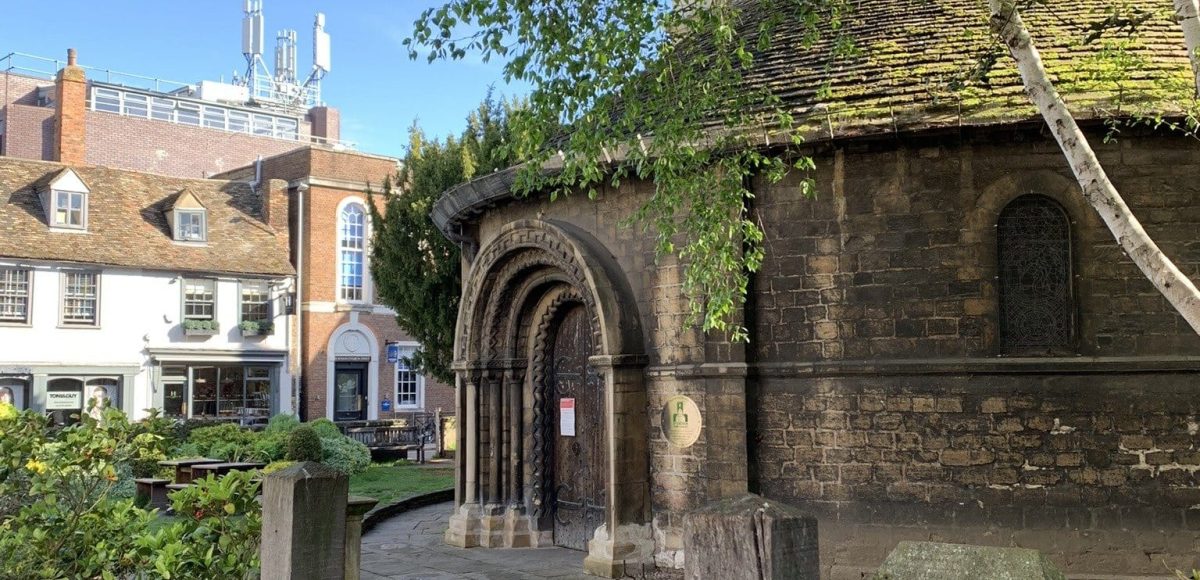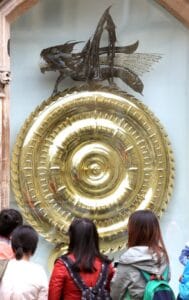8 quirky places in Cambridge you will want to visit

Eight quirky places in Cambridge you should visit
If you’re looking for something unique and fun to do in Cambridge, UK, then you’ve come to the right place! There are so many quirky places to visit in Cambridge, and today we’re going to share with you some of our favourites.

Quirky places in Cambridge – Corpus Clock
For something a bit more historical, you can check out Corpus Clock. This clock is not just any ordinary clock!
The Corpus Clock, or the Grasshopper Clock, is an impressive piece of sculpture located at the Taylor Library of Corpus Christi College. This large clock was the brainchild of John C. Taylor, an esteemed alumnus of the college, and was inaugurated in 2008, in the presence of renowned physicist, Stephen Hawking.
Its awe-inspiring design was recognized as one of Time’s Best Inventions in 2008.
Quirky places in Cambridge – Kettle’s Yard
Kettle’s Yard is a strange and fascinating combination of modern art and housewares. The galleries are packed with an array of 20th-century art, and the surrounding grounds offer sculptures, garden areas, and historic, cottage-style homes. It’s truly an experience like no other and definitely features on the quirky places in Cambridge’s list.
Quirky places in Cambridge – Cambridge Leper Chapel
The Cambridge Leper Chapel, also known as the Chapel of St Mary Magdalene, is one of the oldest complete surviving buildings in Cambridge. This 12th-century Romanesque building was originally the chapel of an isolation hospital caring for people with leprosy and is Grade 1 Listed.
The building has 900 years of fascinating history – at various times it has been a place of worship, a bar, and a warehouse! It owes its survival to its connection with the Stourbridge medieval fair, one of the largest in Europe.
You can walk or bike past the Chapel but it is not usually open unless there is a special event on, so keep a lookout on the website.
Quirky places in Cambridge – The Round Church
Cambridge’s most iconic building, the Round Church was constructed c. 1130 and predates the university by 75 years. The church is full of Norman architecture, marked by thick pillars and rounded arches. It also features stunning stained glass windows, fascinating stone faces, and beautiful 15th-century carved wooden angels.
The Visitor Centre is open Tues-Fri and details the rich history of this church.
Quirky places in Cambridge – Newton’s Apple Tree
Newton’s apple tree in Cambridge is an iconic symbol of the legendary scientist’s impact on science and culture.
This “Flower of Kent” apple tree, which grows outside the entrance to Trinity College, was originally from the actual tree that resides at Newton’s childhood home in Woolsthorpe Manor, Lincolnshire. This tree was planted in 1954 to honour his links to the university and contributions to science.
Quirky places in Cambridge – Milton’s Mulberry Tree
If you make your way to the far end of the Fellows’ Garden at Christ’s College you will see Milton’s Mulberry Tree. The botanical name is Morus nigra and the fruit from this type of mulberry tree are black mulberries, which come out in spring/summer.
This tree you see in the garden today was grown from the root of an original Mulberry Tree planted in 1609 (the year after John Milton’s birth). The tree is large, has a mound at the bottom, and is propped up by wooden posts since it was uprooted in a storm in 1795.
The tree still provides a good crop of mulberries each summer – the gardeners pick them and take them to the College kitchens, where they are used to make jam.
Quirky places in Cambridge – Dinky Doors
As you stroll through the charming streets of Cambridge, you may notice a peculiar detail on some of the buildings. The dinky doors, as they are affectionately known, are miniature-sized doors that are often no more than a foot or two in height. They remind us that even the smallest details can add magic to our daily lives and that there is always something new and interesting to discover in this enchanting city.
Quirky places in Cambridge – Eagle Pub
Nestled on a historic street lies a pub that dates back to 1667, located close to the central area and market square many travellers have passed through its doors.
During World War II, Allied airmen gathered at The Eagle to drown their sorrows and enjoy a bit of banter. They wrote their names, squadron numbers, and other mementos onto the ceiling of the rear bar, using wax candles, petrol lighters, and even lipstick. Legend has it that RAF Flight Sergeant P. E. Turner was the first one to inscribe his squadron number on the ceiling by climbing on a table one night.
In 1953, a monumental discovery was made over lunch. Francis Crick walked in, interrupted the patrons’ lunchtime, and declared that he and James Watson had discovered the secret of life – the structure of DNA, along with Rosalind Franklin whose work was crucial to the understanding of DNA. The incident is recounted in Watson’s book, The Double Helix.
If you are looking for somewhere to stay our Cambridge B&B rooms are simple and affordable, and many have an en-suite bathroom. As a guest of the College, you are welcome to explore the beautiful grounds which are steeped in history and are home to Milton’s Mulberry Tree and The Darwin Garden.
To find out more about the Bed and Breakfast accommodation we offer visit https://www.christscollegehospitality.co.uk/
Book directly with us and you will receive 10 percent off our publicised rates. Just use the promo code BOOKDIRECT